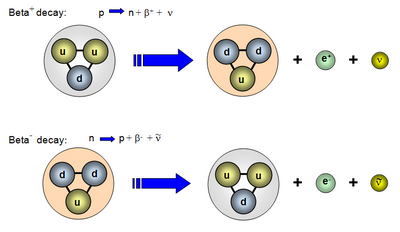What is beta decay in terms of quarks?
1 Answer
In β-decay, a quark decays into another type of quark, releasing a β particle and a neutrino.
Explanation:
Protons and neutrons consist of quarks.
(from quantumpulse.com)
A proton consists of two up quarks and a down quark (
In positron (
The overall result us that a proton becomes a neutron:
A neutron consists of two down quarks and a up quark (
In beta (
The overall result us that a neutron becomes a proton:
In pictures, β-decay looks like this:

(from schoolphysics.co.uk)

